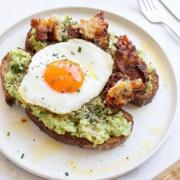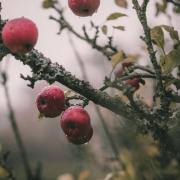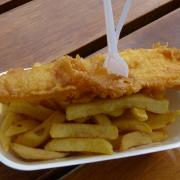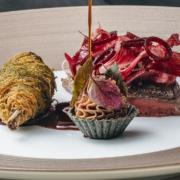Homemade recipe for a classic Hollandaise sauce

It is one of the mother sauces of France and regularly strikes fear into the heart of the everyday cook, not to mention some chefs. The complexity and difficulty of making this luxurious, buttery sauce has been over egged (pun intended).
Hollandaise is a very simple sauce which, when mastered, can be put into service of multiple dishes. It is also the basis for other classic French sauces such as Sauce Béarnaise which can be created by simply substituting lemon juice for vinegar and with the addition of shallots and tarragon, et voila, you have the perfect sauce for your steak. Add some good Dijon mustard to your Hollandaise and you have a Sauce Moutarde.
However simple a classic Hollandaise may be, look for the recipe for this sauce anywhere and you’re going to get the telephone directory. The ingredients are simple, yet occasionally diverge and their quantities are somewhat fluid. The good news is that the method of cooking is generally agreed upon, though not always, and it is the method that must be mastered. You can play around with the ingredients to your heart’s content, but ultimately what you want to present is a rich, velvety sauce and one which is definitely not split. The second piece of good news is that if I can make it (and the photographs attest to that) then you can make it. All you need is patience, discipline and a whole lot of cleaning up, but then that’s every professional kitchen in the world.

INGREDIENTS
2 large free range egg yolks
125g Cornish butter
1 tablespoon fresh lemon juice
Cornish sea salt
Freshly crached black pepper
With these ingredients I’ve used a tablespoon of lemon juice because I prefer its zesty, citrus punch to cut through the rich sauce. You may prefer a more eggy sauce, in which case, you could substitute the tablespoon of lemon juice for a teaspoon with an added teaspoon of water and then adjust the lemon at the end of the process to give the sauce an extra, zingy kick if required.
METHOD OF COOKING
First the dreaded bain-marie. Get a pan and pour in a couple of inches of hot water. Get a bowl which sits comfortably in the pan, but the bottom of which does not touch the water in the bottom of the pan. Test this first to be absolutely sure. The bowl cannot touch the water in the pan beneath.
Clarifying butter is a method of removing the milk solids and water from the butter leaving just the fat, which doesn’t sound so edifying, but works a treat just the same. Indian ghee is basically clarified butter.
Put the butter (I used Rodda’s Cornish butter) in a heavy bottomed pan and melt on a low heat keeping an eye on it to make sure it doesn’t start to burn, you just want it melted. Some milk solids will float to the top of the pan, simply skim these off and discard. Pour the rendered butter into a pouring jug, trying to leave the milk solid silt at the bottom of the pan behind. You should be left with a mostly clear golden liquid.
Crack two egg yolks into the bowl for the bain-marie, save the whites in a separate bowl. Squeeze the juice of a lemon into another bowl, remembering to remove any pips or flesh (I used a tea strainer). Add the tablespoon of lemon juice to the eggs and then place the bowl over the pan. The water in the pan should not be boiling but preferably be just under simmering, you do not want to scramble the eggs. Get a balloon whisk and begin to beat the eggs continuously until you create a sauce thick enough to see the whisk marks moving through it.
At this point I take the bowl off the heat and place on a knotted tea towel to make sure the bowl doesn’t move around. Now add the clarified butter a trickle at a time, whisking continuously until all the butter has been absorbed and you have a rich, smooth, unctuous sauce.
Add the salt and pepper to taste, bearing in mind the amount of salt you add if you used salted butter. In sauces such as this I prefer to use a salt grinder as it gives me more control over the amount of salt I add at a time. You really don’t want to go through all the trouble to create this sauce and then spoil it by over salting it.
If you wish to loosen the sauce after adding all of the clarified butter add a little water at a time, or more lemon juice, though this last ingredient will of course change the dynamic of the flavour.
Now the sauce is yours and you can do what you want with it. Its classic uses are with asparagus or in eggs Benedict. It also works wonderfully well with new potatoes, simply pour over and enjoy with ham, or grilled chicken and fresh peas or broad beans.
Ewen MacDonald is a regular contributor to Cornwall Life Magazine.



























